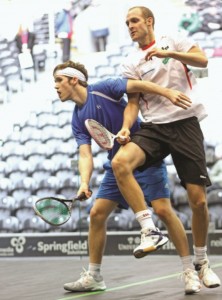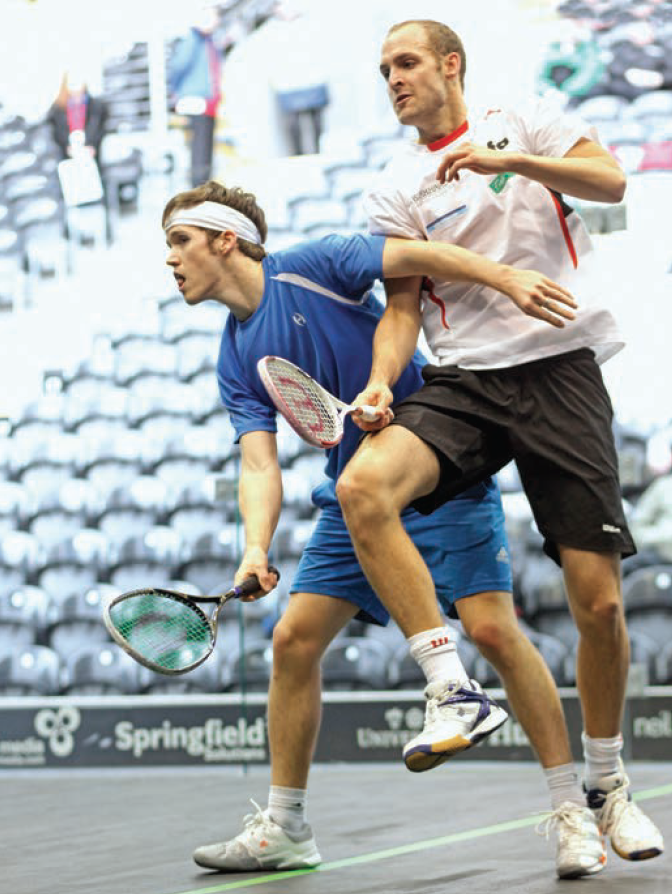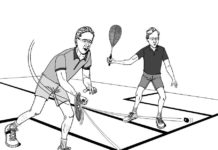
By Barry Faguy
HEY REF! I was refereeing a match recently and made a key decision—and quickly realized I had made a mistake. It was not a judgment issue, but about the actual rule. Should I have corrected myself?
If your error relates to a Marker call (typically when you’re acting as both Marker & Referee), then the rules actually specify how you can change the call. It’s a bit dicier when it relates to a Referee decision. If it’s clearly the mis-application of a rule (e.g., you gave a stroke to the striker who turned and hit the opponent with the ball), then I think fairness demands that you immediately correct it and explain why. As well, it’s the right thing to do for cases where you get some added information (like unseen racquet contact). The rules state: “The decision of the Referee shall be final”—and that of course would include any decision that’s changed. However, these should be rare birds indeed—otherwise you don’t look too good.
HEY REF! What exactly qualifies as distraction? My opponent, on his way to the ball, accidentally hit me and spun me around, essentially taking me out of play. I appealed and got a ‘No Let.’ I know I can’t ask for a let for interference because I wasn’t the striker—but surely that should count for distraction?
The question demonstrates the understanding that, when it comes to interference, only the striker may ask for a let— whereas, when it comes to distraction, either player may do so. The rules are silent on what qualifies as distraction— other than saying “the Referee determines” it. This, therefore, could pretty much open it to anything—and that opening could easily be of a can of worms. Convention has it that distraction applies to such events as a loud noise, lights going out, camera flashes, an unusual action by the opponent (like a raised hand), and so on. In contrast, what happened in this question is usually considered as interference—interference that the ‘striker’ has accepted. If you are ever the Referee, you should be careful of setting too lax a precedent, because many could find ways to take advantage of your largesse. Finally, although not engraved in stone, two helpful clues in determining the genuineness of a distraction are firstly, that the appeal is immediate, and secondly, that the appeal is clearly not simply because the player is faced with a difficult return to make.
HEY REF! My opponent hit me with her backswing, and the shot then hit the tin. She then turned around and asked the Referee for a let—and he gave her a stroke! I figured it should actually have been a No Let since she took the shot. What gives?
The issue here seems to be one of a late appeal. The rule states that the striker must make the appeal “immediately”— but often there is a justifiable delay. Typically, the interference happens—and there’s a delay before the striker asks for a let. This appears as evidence that the striker has played through, which normally demands that the appeal be denied. However, this conclusion leaves out key wording that allows for a delay where the striker was “clearly not continuing play.” You can be sure that, given the sensitivity of the swing, virtually any contact to the backswing or downswing will meet with an appeal. It’s clearly impossible to vocalize the appeal at the very moment a fast moving racquet unexpectedly hits an opponent. This also applies, for example, when there’s a big collision or a fall. As far as your case is concerned, the referee clearly saw this as an allowable, late appeal. The stroke was probably awarded because you were not making every effort to clear—even though the racquet contact might have been minor.





